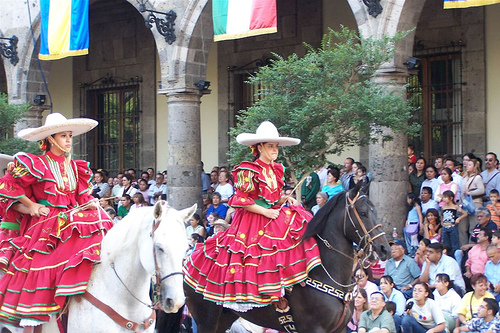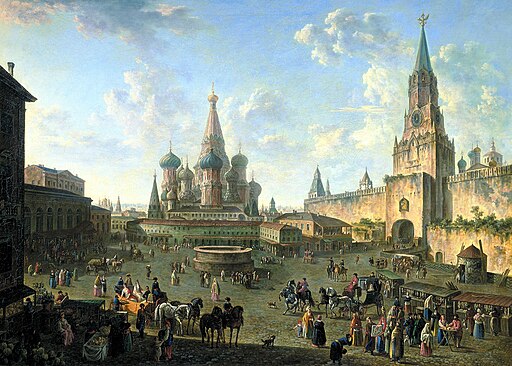
“White House at Night” by Vincent van Gogh was created six weeks before his death. It is thought that van Gogh painted “White House at Night” around 8:00 PM, based on the position of the “star” in the painting.
Astronomers calculated that the star in the picture must be Venus, which was bright in the evening sky in June 1890. Does this painting express Van Gogh’s psychological tension?
The painting itself has had a turbulent history. In the late 1920s, it became part of a private collection of a German industrialist.
Pictures of this style were labeled “degenerate art” by the Nazis, contributing to this painting and other Post-Impressionism paintings being kept secret.
Thought to have been lost after World War II, the painting was in the Hermitage archives for fifty years before being exhibited in 1995.
At the same Hermitage exhibition, three other Van Gogh’s paintings, also thought to have been lost, were presented for the first time since the war.
They included: “Landscape with House and Ploughman,” “Morning: Going out to Work (After Millet)” and the “Portrait of Madame Trabuc” all by Vincent van Gogh.
White House at Night
- Title: White House at Night
- Artist: Vincent van Gogh
- Year: 1890
- Place Created: Auvers-Sur-Oise, France
- Medium: Oil on canvas
- Dimensions 59 cm × 72.5 cm (23.2 in × 28.5 in)
- Museum: Hermitage Museum
THANK YOU to our Sponsor:
Jordan from Sydney, Australia
Become a Sponsor at SPONSOR “Joy of Museums”
Vincent van Gogh
Vincent Willem van Gogh has become among the most famous and influential figures in Western art history. Van Gogh was unsuccessful during his lifetime and was considered a madman and a failure.
He created about 2,100 artworks, including around 860 oil paintings, most of them in the last two years of his life.
They were characterized by bold colors and dramatic, impulsive, and expressive brushwork that contributed to modern art’s foundations.
Vincent van Gogh
- Name: Vincent Willem van Gogh
- Born: 1853 – Zundert, Netherlands
- Died: 1890 (aged 37) – Auvers-Sur-Oise, France
- Resting place: Cimetière d’Auvers-Sur-Oise, Auvers-Sur-Oise, France
- Nationality: Dutch
- Movement: Post-Impressionism
- Notable works:
- Starry Night
- Starry Night Over the Rhône
- Sunflowers
- Irises (Getty Museum)
- Self Portrait, dedicated to Paul Gauguin
- Portrait of the Postman Joseph Roulin
- White House at Night
- The Night Café
- Self-Portrait as a Painter
- Self Portrait with Felt Hat
- Green Wheat Field with Cypress
- The Raising of Lazarus
- Self-Portrait’ Mutilated Ear
- Café Terrace at Night
- Tarascon Stagecoach
- Wheatfield with Crows
- Bedroom in Arles
- Portrait of the Artist’s Mother
- Vase with Red Poppies
- Memory of the Garden at Etten
- Great Peacock Moth
- Farmhouse in Provence
- Agostina Segatori Sitting in the Café du Tambourin
- Fishing Boats on the Beach at Saintes-Maries
- Seascape at Saintes-Maries
- Girl in White
- Young Peasant Woman with Straw Hat Sitting in the Wheat
- Van Gogh’s Chair
- Gauguin’s Chair
- Road with Cypress and Star
- Almond Blossoms
Loving Vincent
A Virtual Tour of the Hermitage Museum
- “Madonna Litta” attributed to Leonardo da Vinci
- Composition VI by Kandinsky
- “Portrait of Doña Antonia Zárate” by Francisco Goya
- “White House at Night” by Vincent van Gogh
- “The Three Graces” by Antonio Canova
- Egyptian Collection in the Hermitage Museum
- Gonzaga Cameo
- “Psyche Revived by Cupid’s Kiss” by Antonio Canova
- “The Stolen Kiss” by Jean-Honoré Fragonard
- “Boulevard Montmartre” by Camille Pissarro
- “Three Tahitian Women Against a Yellow Background” by Paul Gauguin
- “Conestabile Madonna” by Raphael
- “Struggle between Tiger and Bull” by Henri Rousseau
- “Landscape with Diana and Callisto” by Cornelis van Pulenburg
- “The Return of the Prodigal Son” by Rembrandt
- “Daedalus and Icarus” by Charles Le Brun
- Aphrodite Kallipygos
- “Waterloo Bridge. Effect of Fog” by Claude Monet
- “Napoleon during his campaign in Egypt” by Jean-Léon Gérôme
- “Memory of the Garden at Etten” by Vincent van Gogh
- “Boats on the Beach of Saintes-Maries” by Vincent van Gogh
- “Le Bassin du Jas de Bouffan” by Paul Cézanne
Van Gogh’s Ugliest Masterpiece
~~~
“The best way to know God is to love many things.”
– Vincent van Gogh
~~~
Photo Credit: Vincent van Gogh [Public domain], via Wikimedia Commons
Popular this Week








 Sponsor your Favorite Page
Sponsor your Favorite Page SEARCH Search for: Search Follow UsJoin – The JOM Membership Program
Sponsor a Masterpiece with YOUR NAME CHOICE for $5
Share this:
- Tweet
